System Crash: An Activist Guide to the Coming Democratic Revolution
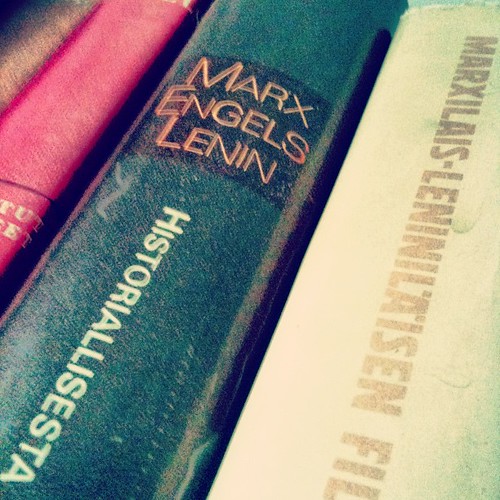
Labour cannot emancipate itself in the white skin where in the black it is branded.
Marx
The Social-Democrat’s ideal should not be the trade-union secretary, but the tribune of the people, who is able to react to every manifestation of tyranny and oppression, no matter where it appears, no matter what stratum or class of the people it affects; who is able to generalise all these manifestations and produce a single picture of police violence and capitalist exploitation; who is able to take advantage of every event, however small, in order to set forth before all his socialist convictions and his democratic demands, in order to clarify for all and everyone the world-historic significance of the struggle for the emancipation of the proletariat.
Lenin
There has never been a better time to revisit the question of oppression, that most protean of antagonists and capitalism’s henchman. Oppression brings together two distinct elements that differentiate it from similar, related phenomena (bigotry) and related human cognitive errors (prejudice). It involves systemic prejudice, which is directed at a group of people for some perceived or actual characteristic that they share.
While oppressions have both material and historical foundations, they are treated as though they are ‘natural’ occurrences that exist outside the specific dynamics of any particular class society. Understanding that this is not the case is crucial to understanding the role oppressions play.
A quick gazetteer of oppression
Jingoism is aimed at people from ‘othered’ nationalities, often stemming from the nationalist and militarist myth-making that were fundamental to the 19th century construction of nation-states. Eric Hobsbawm’s work documents this at length.
Racism is directed at those whose ‘phenotypical’ form (an organism’s observable traits) or perceived lineages place them in a group that has been historically ‘othered’, often with complex roots in nationalism, slavery, hyper-exploitation, colonialism/imperialism, and religious sectarianism. Racism often overlaps with, but cannot be conflated to, jingoism.
Religious sectarianism and oppression also have overlaps with racism (as in the case of Islamophobia and anti-semitism) and nationalism (as in the contemporary cases of the also-racist persecution of Palestinians, Rohingya, Uyghur, Roma, Gypsies and Travellers, and many others).
Disabilism targets an umbrella of people who are impacted (sometimes visibly, sometimes invisibly) by disabling social relations. Such people might have physical impairments, mental health conditions, chronic illnesses, or even be ‘neurodivergent’ (i.e. have a variation in their brains that makes their mental functions different from the norm). A society that is not focussed on enabling human flourishing, like capitalism, will tend to treat disabled people (especially from the working class) as if they are merely burdens.
Like disablism, ageism is directed at the young and old because class society in general, and in this instance capitalist class society, sees them as drains on resources. Such repulsive and anti-human conceptions of what are just the usual cycles of human maturation find their ultimate expression in fascistic cults of youth, notably in Fascist Italy, Nazi Germany, and Militarist Japan in the 1930s.
Misogyny is the hatred of women and the primary tool of the patriarchy (the rule of men). Women have been socially marginalised in class society owing to the dehumanising ways such a society treats human reproduction and the division of labour. This is related to women’s allocation to ‘shadow work’ (unpaid labour), which is largely domestic work in and around the home.
Women’s oppression is rooted in bourgeois conceptions of the family. Despite radical changes, the family – and the misogyny and assumptions about a ‘woman’s place’ to which it gives rise – remains central to capitalist society. The family means: low-cost maintenance, reproduction, and socialisation of the labour force; high levels of privatisated household consumption (and therefore demand for goods and services); and a primary mechanism of social control, where conformity and obedience to authority can be inculcated.
Homophobia, which impacts men who are attracted to men and women who are attracted to women, and biphobia, which is directed at those attracted to both sexes, is also rooted in the ideology of the family. Transphobia is directed at those whose gender identity does not align with what was assigned to them at birth, which encompasses both binary (women and men) and non-binary people.
Oppression directed against LGBTIQ+ (lesbian, gay, bisexual, transgender, intersex, questioning, asexual) people has a complex relationship to misogyny, since people whose sexuality or gender identity is different from that required in the social reproduction of class society threaten core assumptions of that society.
This is not, and cannot be, comprehensive. Oppression emerges from material factors (the enslavement of Black people, the debasement of women to mere reproduction, the threat bisexual people pose to the family unit as narrowly conceived by bourgeois society), but this is mediated by regionally diverse cultures, which are not mechanistically determined by economy.
The fact is, oppression latches onto many facets of life and society, and is never static. That is why, when we see decreases in sexist attitudes in some areas of social life, for example, we can simultaneously see increases in racism and classism, or vice versa. And although almost all oppressions within class society share substrates, it is not always the case that they necessarily speak to each other.
Oppression and capitalism
If oppression is not natural, why does it seem to be the case that we cannot live in a society without it? Why, even when things are good, is there always some new group being pitched as the ‘reason’ for society’s ills, the objects against whom others can freely punch down.
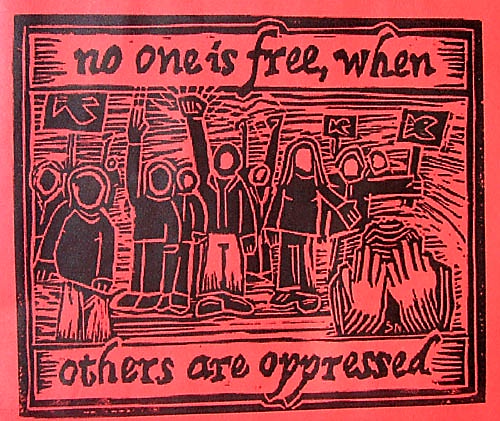
Prejudice might well be an inviolable facet of human cognition. We tend to abstractly categorise things, people, and ideas, and then to mistake – ‘reify’ – those categories for actual things, people, and ideas. But oppression is different because it is systemic.
Young children will frequently form prejudices against one another on the flimsiest pretexts (freckles, glasses, bigger than usual ears), which just as frequently vanish as whimsically as they were conceived. What is interesting is why some prejudices (allowing that prejudice itself can be limitlessly arbitrary) gain a strong purchase on the collective social imagination.
The key point here is that oppression plays a critical part in the maintenance of capitalist reproduction. Here, it is important to distinguish oppression within capitalist society from its close counterpart, exploitation. Exploitation applies to all workers. They have to sell their labour-power to earn a living; they trade their labour-power out of necessity in the market-place.
Most of the oppressed are exploited (i.e. they are working class). Precisely because they are marginalised and discriminated against, they are even less likely to become part of the ruling class or the middle class than other people born into the working class. They therefore bear a double burden: exploited and oppressed.
The oppressed serve as a buffer. They distract the rest of society from its own suffering. They allow other workers to become invested in the maintenance of their own invisible chains. This scapegoat role is a shifting one, the focus moving periodically from one oppressed group to another.
In Britain, we have seen this emphasis jump like an infection, from Black people and Asians, to gay people, to people of Muslim faith, to the disabled, to Eastern Europeans, to Travellers, to migrants, to transgender people, and back again, most times encompassing all of these groups simultaneously but in varying degrees of intensity.
Covid-19 and other illuminations of racism
In late April 2020, nearly a month after Britain locked down due to the coronavirus pandemic, a curious phenomenon became observable; namely, the majority of the doctors and nurses dying from the pandemic were from a Black, Asian, and Minority Ethnic, or ‘BAME’, background. Could this have been mere coincidence, despite the fact that BAME people made up only 20% of the NHS staff?
Many media outlets and government outfits seemed to think so, as they scratched their heads, arriving at every kind of explanation and excuse – from Vitamin D deficiency to behavioural tendencies. Few were willing to address the elephant in the room – systemic discrimination and structural inequalities.
As those formerly deemed unskilled and undesirable are rebranded ‘key workers’, there was an apparent over-representation of BAME workers within this group. Uber, bus, and delivery drivers; cleaners, orderlies, and nurses; security guards; post workers; shop assistants; and many others who worked in precarious occupations, but faced heightened exposure to the virus due to the customer-facing nature of their work. The concentration of BAME people in these roles is not an accident, but an artefact of a sustained reproduction of hyper-exploited labour, through legacies of colonialism, slavery, and institutional racism in the US, Britain, and many other places.
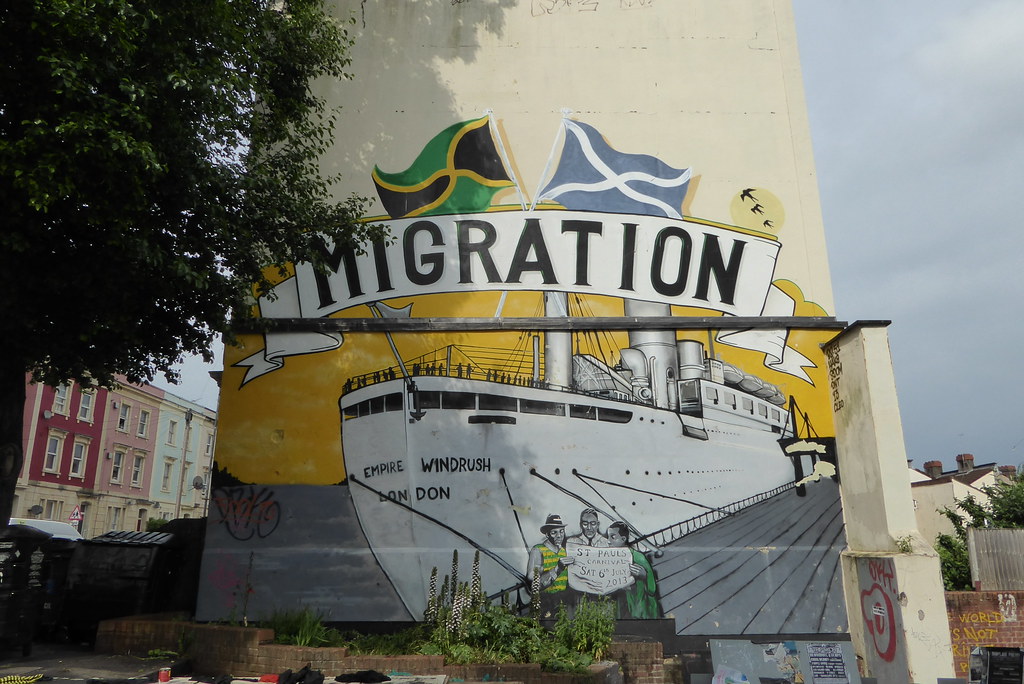
When the Windrush generation – at the time of writing still being deported from Britain – first arrived, there were sanctioned jobs they were expected to do, to help the country ‘get back on its feet’ in the post-war years. These low-paying service jobs were the approved roles for Black people. The underlying assumptions are still with us.
Edward Enninful, the first Black editor of Vogue Magazine, was racially profiled in his place of work, when a security guard in the building denied him entry and referred him to the service door. As appalling as such set-ups are anyway (that we employ ‘poor doors’ in the 21st century), Enninful’s encounter is all too familiar. This sort of informal racialised policing has a harmful psychological impact on people of colour, and when adopted as a government policy, as seen with the Windrush scandal and the UK’s ‘hostile environment’, they can have devastating consequences.
When this becomes a formal policing strategy, the results are deadlier. A Black man walking into a shop is already deemed suspect; he is examined with closer attention, and any misstep can result in a fatal outcome. This was the case with George Floyd, where a bounced cheque at a supermarket cost him his life, as he was publicly lynched in broad daylight by police officer Derek Chauvin.
Or take the case of Paulette Wilson. A Black woman who had spent 40 years working in Britain, she was hoping for peaceful retirement when hurled into a bureaucratic hell, including incarceration in a detention-centre, because her records had been destroyed by the Home Office and she had fallen victim to the ‘hostile environment’ state racism of the Tory Government. Her reward was an untimely death at the age of 64, with no compensation for her abusive treatment.
BAME people (as well as other members of the oppressed) often traverse the world with an extra layer of caution, conscious that their identity may be weaponised against them at any time. The knock-on impact of this is a further diminution of control over their own fate, and a reduced capacity to fight the multiple exploitations and oppressions they face, from above and below. The cycle of poverty is therefore reproduced, with BAME people concentrated in poorer areas, with fewer opportunities, and in effect, exposed to the many ravages that cycle through society, be it a virus or economic collapse.
Oppression and identity
Capitalism uses permutations and multitudes of oppressed people to secure its reproduction through time. So why is it that these groups do not often band together – with each other and with the exploited as a whole – so as to transcend the boundaries imposed upon them, unite the forces of resistance, and push back against the system?
Occasionally they do, and these are the groundswells of solidarity and progressive advance we witness throughout history. But they are occasional precisely because, insofar as capitalism remains intact, they eventually get knocked back and dissipated, often through violent repression.
The American Civil Rights Movement of the 1960s was one such example, where we saw solidarity across racial lines, as Black-led fights for equality and freedom from oppression were joined by White allies, pushing towards the same aim.
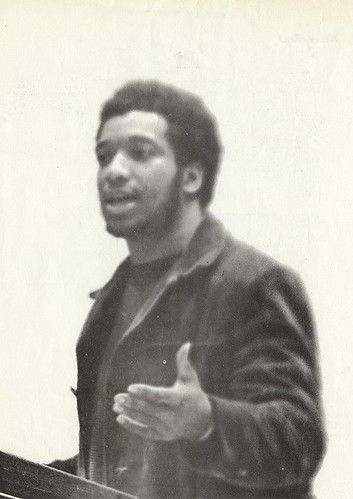
The result? In 1969 Fred Hampton, a revolutionary leader and member of the Black Panther Party (BPP), was working on developing closer ties between the BPP and other groups, when a 14-man FBI assassination team murdered him during a pre-dawn raid. He was one of many such leaders to be brutally slain by the Federal Government during this period. Critically acclaimed author Jay Feldman has written extensively on how the FBI worked knowingly to divide White and Black workers and destroy the revolutionary potential of the Civil Rights Movement.
Earlier this year in May, a similar group of diverse peoples took to the streets of America and Britain, making the same demands for ‘Black Lives’, as their foremothers and forefathers had done nearly six decades earlier.
During the Thatcher years, a group of LGBTIQ+ people joined forces to support striking miners, raising money to support miners’ families during the bitter year-long struggle against pit closures in 1984-5; and this was reciprocated when the National Union of Mineworkers came out in support of LGBTIQ+ rights and led the 1985 London Pride Parade – an event later immortalised in the 2014 film Pride.
Gay rights have progressed further since the turn of the century, yet, today, transgender people are fighting for recognition and the self-same rights thought to have been won decades ago. So, what has happened? How did we end up here again?
The answer is not straightforward. And it is not that people from different oppressed groups cannot see their plight in other groups’ struggles, or that the allies of one oppressed group cannot recognise equivalences across the different struggles. But it is in the interest of the ruling class and corporate capital to see these groups divided – and therefore easier to control.
Within the power structures of the system, privileges, however tenuous, are apportioned to different groups, even among the oppressed. This gives some an interest, however marginal, in defending privileges – and thereby acting as agents for the oppressor. We see different oppressed groups holding onto their chains as they try to preserve their place within capitalist power structures.
And so it was in America that White indentured workers who once saw their fate mirrored in that of the enslaved Africans toiling in the fields were granted the gift of ‘Whiteness’ – so as to prevent these groups, who together far outnumbered their oppressors, from banding together to fight for general emancipation.
The newly minted group of ‘Whites’ (which at the time excluded the Italians and the Irish) were told that they were ‘better’ than – racially superior to – Africans, who were labelled ‘Negroes’, ‘Blacks’, or ‘Niggers’. This extra leverage of Whiteness, which involved only marginal benefits for most, often meant, and often still means, that the most adamantly racist and determined defenders of ‘White supremacism’ are the poorest of workers – those who stand to gain most from working with their Black counterparts to overturn their oppression
This pattern is replicated across time and space, drawing more groups of people into the realm of the oppressed, as they become surplus to capital’s requirements. The Keynesian economist Joan Robinson noted: ‘The misery of being exploited by capitalists is nothing compared to the misery of not being exploited at all.’ This, of course, is true only in class society; but the point is crucial, for the divisions between the securely employed, the precariously employed, and the unemployed underpin the whole edifice of oppression in capitalist society.
What is happening when we see previous gains by the oppressed reversed, and earlier movements stymied, is that capital is reasserting itself. This divide-and-conquer strategy is a bedrock of class society.
The targeting of oppressed groups is never simply random. It tends to be those whose presence and activity is deemed most threatening to capitalist interests, either because they are surplus to requirements, or because they threaten the structures of capitalist reproduction. Unemployed Black youth – ‘surplus humanity’ in capitalist terms – are routinely demonised because they are perceived to be a potentially militant threat to the social order. Feminists and LGBTIQ+ activists threaten the patriarchal family. Roma and Travellers are attacked because their nomadic way of life does not conform to the imperatives of capital accumulation. Muslims become an ‘enemy within’ in the context of imperialist wars in the Middle East. And so on.
The discourse of oppression is developed after the fact, but the aim is always the preservation of capitalism, where exploiters are able to carry on with the business of profiteering, using marginalised groups as scapegoats for social failures. In this way, as long as the system endures, we keep ending up back in the same position.
Processes, unity, and contradiction
The Left has too often made mistakes about oppression and exploitation. The basis of these mistakes is to reify identity or class, that is, to treat a category (an idea, an abstraction) as a thing. Class reductionists treat class in this way: that is, they regard people who once belonged to the working class as still part of it even when their social position and therefore their loyalties have changed, while others are not accepted as working class even when they are trade unionists fighting exploitation. They do so because the abstraction becomes more real than class as it actually exists. The point is not just that class has changed – as liberals love to argue – but that class is not a static category, but a dynamic process.
This is also true of the categories of the oppressed, albeit with differences. So Blackness emerges when both racial pseudoscience ‘justifies’ certain anti-Black practices (such as transatlantic slavery or European colonialism), and Black people realise a historical agency in solidarity and opposition to such practices (in anti-racism, anti-colonialism). Likewise, LGBTQI+ identities emerge out of both homophobia, transphobia, etc and the coalescence of identities in resisting this oppression. Harmful fragmentations arise from seeing identities not as a process, but as transhistorical, static, timeless, ‘natural’ rather than social categories. This results in separatisms, exclusionary politics, an unwillingness to recognise new oppressions as they emerge, or acknowledge either advances or erosions of gains. Similarly, class reductionism treats class not as what emerges when workers unite to challenge their exploitation, or abolish exploitation by creating a new, classless society, but as a timeless quality adhering to special people (identified by things as flimsy as regional accents, particular vocations, etc). They then accuse the oppressed of fragmenting the struggle of the exploited by focusing on their oppression. Such a false theory of class means that oppressed people can feel excluded from movements that should embrace them.
Marxism, class, and oppression
For socialism to be achieved it must be, in Marx’s conception, the self-emancipation of workers. Atomised workers in competition with each other cannot emancipate themselves. Only workers who unite as a class and fight collectively can change the world.
Marx also argued that the working-class movement has to fight every form of oppression, for its purpose and effect is to divide and weaken the workers’ struggle. Lenin put it very succinctly when he said that a socialist activist is not first and foremost a trade unionist, but a ‘tribune of the oppressed’.
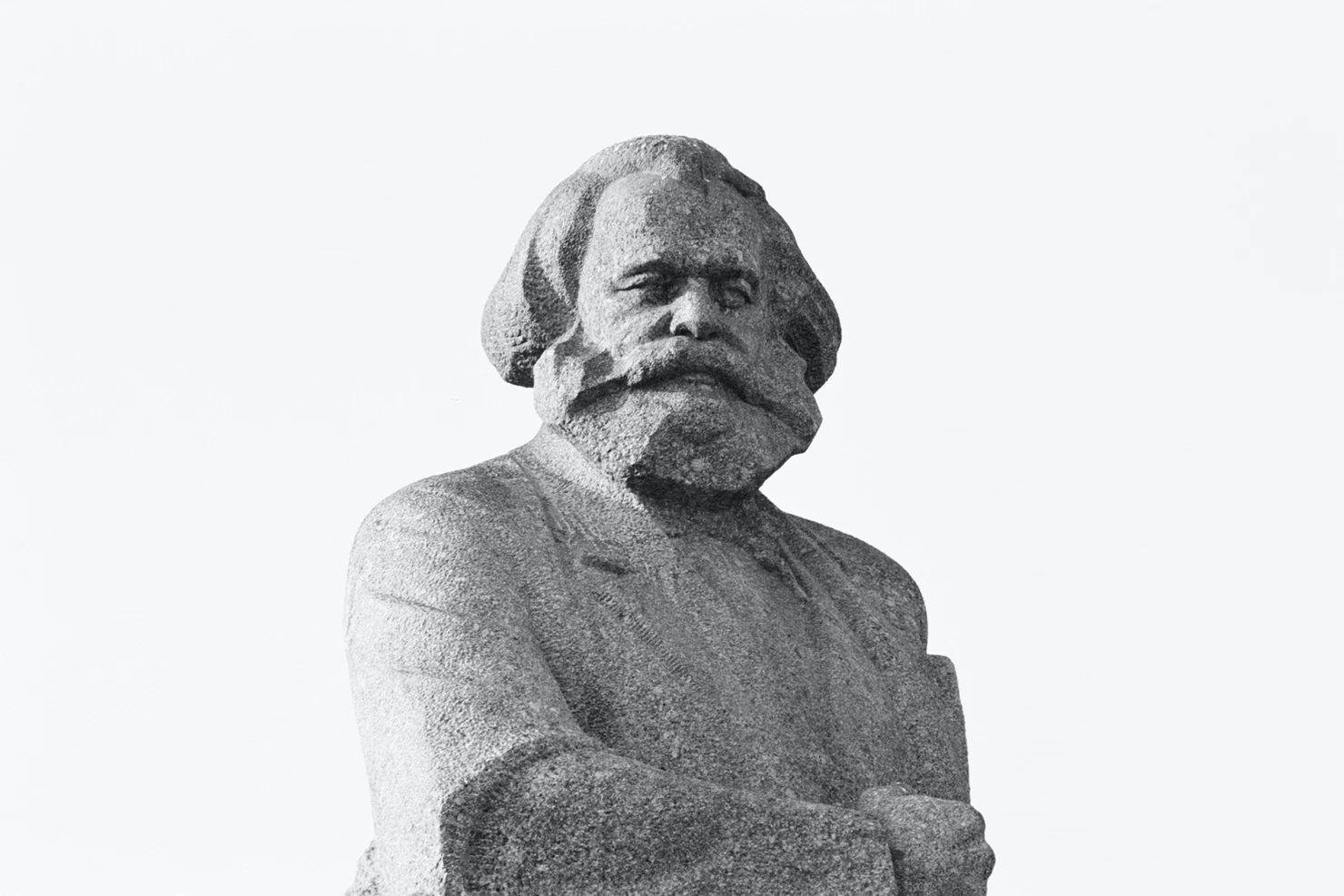
The unity of the exploited and the oppressed in the struggle for social emancipation is the aim: that is the only way to create a political force powerful enough to overthrow the state, dispossess the rich, and create the basis for the construction of a new democratic society.
How do these broad generalisations relate to theories of oppression and ‘intersectionality’?
The metaphor of ‘intersections’ of oppression, conceived as an attempt to capture (not reify) the multi-layered and overlapping character of oppression, was first conceived by civil rights lawyer and Black feminist philosopher Kimberlé Williams Crenshaw:
Consider an analogy to traffic in an intersection, coming and going in all four directions. Discrimination, like traffic through an intersection, may flow in one direction, and it may flow in another. If an accident happens in an intersection, it can be caused by cars travelling from any number of directions and, sometimes, from all of them. Similarly, if a Black woman is harmed because she is in the intersection, her injury could result from sex discrimination or race discrimination.
Intersectionality theory has, however, sometimes been reified in the context of postmodernism and neoliberalism. Postmodernism – a portmanteau of related theories centred on the basic idea that no single overarching ‘grand narrative’ is capable of explaining the world as a whole – has encouraged a multiplication of ‘discourses’ and ‘identities’ as a means towards self-valuation, self-assertion, and self-empowerment.
But has it delivered? Postmodernism has a rotten reactionary core: the idea that human beings cannot arrive at a common understanding of the world as it really is, on the basis of which they might organise themselves collectively to change it. Instead of promoting the unity necessary to take on the power of capital and the state, postmodernism celebrates abstracted ideas of ‘difference’ and ‘diversity’. You and I can choose an ‘identity’, but the rich continue to rule because united historical struggle against oppression and exploitation is foreclosed.
In addressing identity politics and intersectionality, the theorist Asad Haider has tried to place Crenshaw’s work in its context:
She cited cases in which courts determined that an anti-discrimination lawsuit ‘must be examined to see if it states a cause of action for race discrimination, sex discrimination, or alternatively either, but not a combination of both’. She went on to link this specific legal question to the general problem already described by the Combahee River Collective: that single-issue political frameworks would end up centring the most privileged members of a group, marginalising those whose identities exposed them to other forms of subordination.
Haider argues that intersectionality is subverted when its invocation forgets that it was intended to critique official denials that many people experience multiple oppressions: this is what matters. Postmodernist interpretations of intersectionality have, in fact, hollowed out its radical content. As the work of Tommy J Curry has shown, this can even cause the oppression of some groups to be partially erased. Black men are seen as empowered by maleness, rather than oppressed as Black men, and this has meant that ‘the Black male has been the most ignored subject in the attempt to pluralise identities intersectionally’.
Oppression is at the core of Marxism. The working class will never liberate itself while divided against itself. Any self-described socialist, anarchist, or Marxist who subordinates oppression to class understands neither. While electoral coalitions frequently necessitate giving ground to reactionaries on issues such as immigration law, revolutionary struggle to abolish class society is only – and often irreparably – weakened by such concessions.
Marx was famously anti-utopian, but by this he meant he was opposed to any form of socialist organisation or doctrine that imposed blueprints from above on the working class. While Marx was circumspect, then, in speculating about a future society, there are many indications scattered throughout his work of what such a society might look like.
The abolition of oppression opens up a range of possibilities that are truly exciting; every human relationship today, between women and men, Black and White, gay and straight, trans and cis, is filtered through distorting social relations that are ‘naturalised’ by ideology. As Marx wrote, ‘The ideas of the ruling class are in every epoch the ruling ideas.’
To put it bluntly, under class society the quality of our relationships is diminished; this spiritual violence impacts every human being of every class, albeit in different ways. It reduces and diminishes what it is to be human, so that we can only begin to scratch the surface of the shared possibilities of humanity. There are many reasons to seek to overcome capitalism, not least the impending climate crisis that threatens our species survival, but to imagine the cosmic joke of a species with such potential never managing to seize control of its own destiny and create a society fit for its full capacities is perhaps the greatest reason of all.
Nor is this goal a merely distant one: in working together now, as comrades, we can change ourselves and each other – that, indeed, is why Marxism is rooted in struggle as a self-transforming activity. Solidarity – among all the exploited and oppressed, the great majority of the human race – is not an abstraction. It involves real relations between real human beings, and offers some of the greatest opportunities for our own personal and collective advancement within the limits of our current society – as well as providing the essential means finally to end 5,000 years of exploitation and oppression in class society.
Anti*Capitalist Resistance will soon be publishing this new book on the world crisis and the popular resistance in print format. Because of the urgency of the political situation, however, we will be publishing the book chapters as a series of long-read online articles over the next month or so. This is the ninth chapter.

